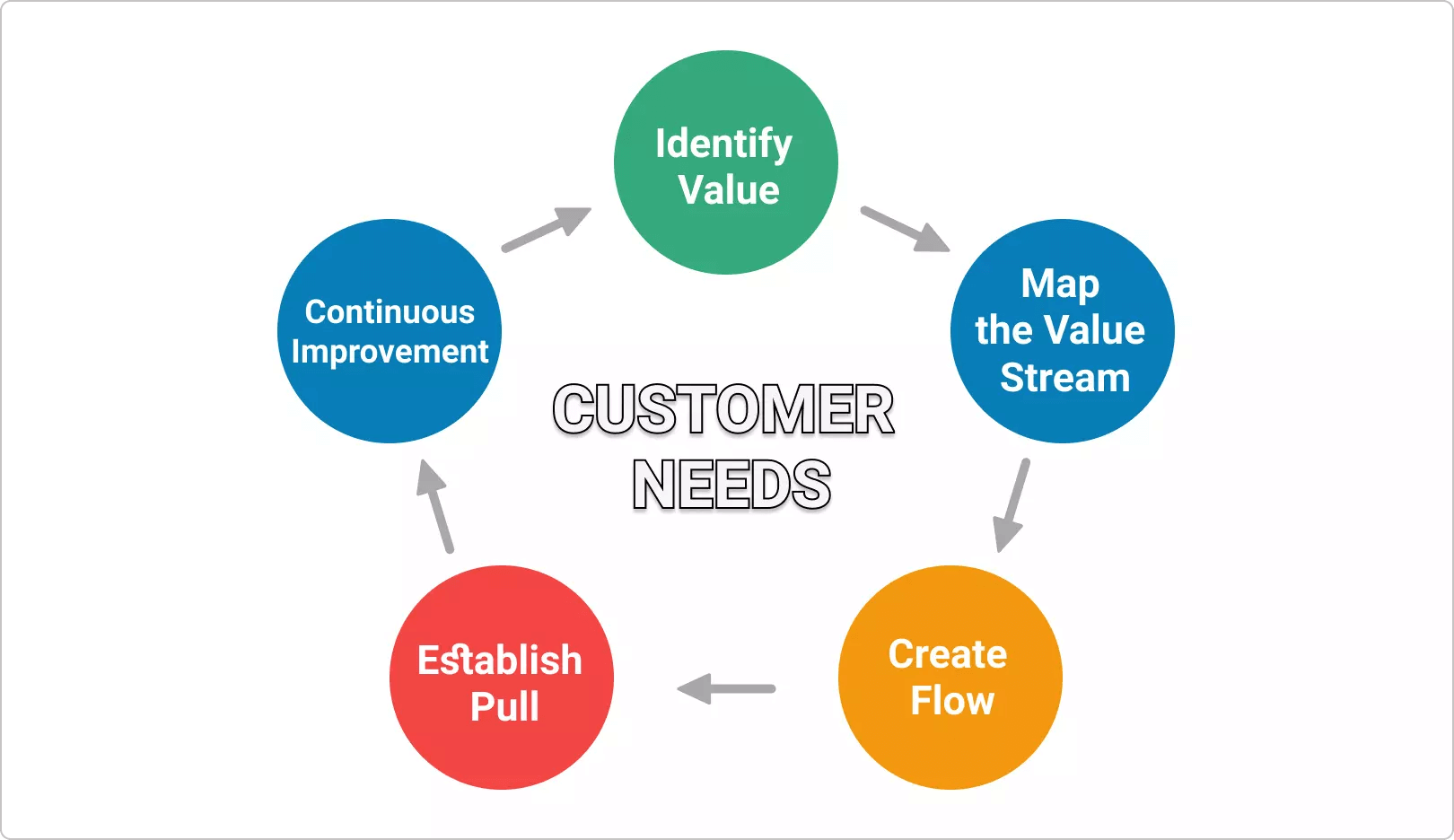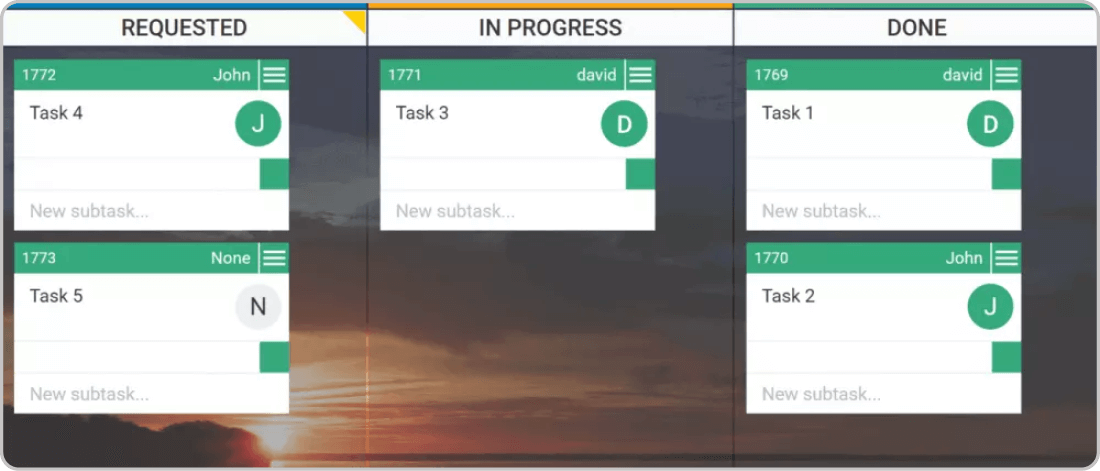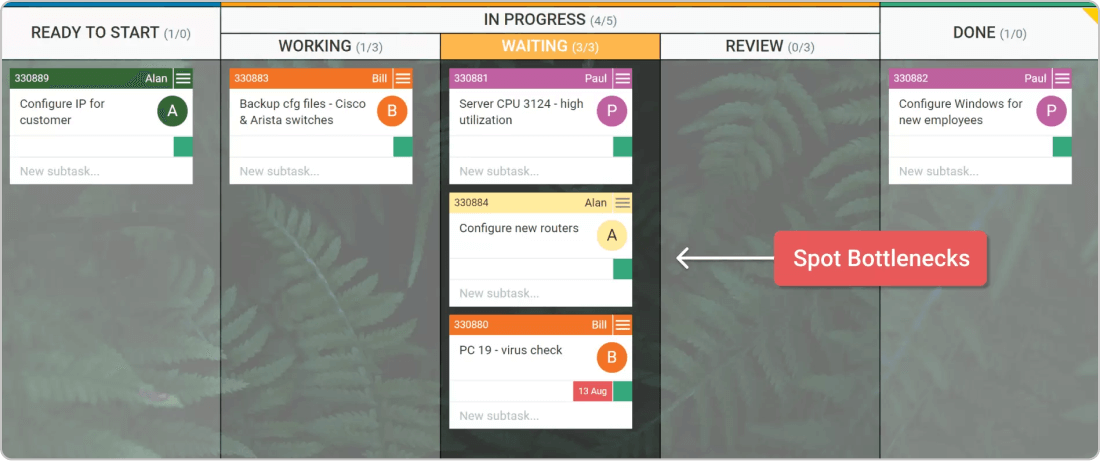- What Is Lean Management?
- The 5 Principles of Lean
- What Is Shared Leadership?
- What Is Lean Manufacturing?
- What Is Value in Lean?
- 7 Wastes of Lean
- What Is Mura?
- What Is Muri?
- What Is 5S?
- What Is the Cost of Delay?
- What Is Value Stream Mapping?
- What Is a Pull System?
- What Is a Bottleneck?
- Just-in-Time Manufacturing
- Implementing a Kanban Pull System
- Pull System on the Portfolio Level
- What Is Kaizen?
- What Is Continuous Improvement?
- Built-In Quality Management
- What Is the Poka-Yoke Technique?
- What Is the PDCA (Plan Do Check Act) Cycle?
- 5 Whys: The Ultimate Root Cause Analysis Tool
- Gemba Walk: Where the Real Work Happens
- A3 Problem-Solving: Fight the Root Cause
- How To Perform Root Cause Analysis?
- Root Cause Analysis Tools
- What Is a Pareto Chart?
- What Is a Scatter Diagram?
- What Is a Fishbone Diagram?
- What Is Hoshin Kanri?
- What Is Hoshin Kanri Catchball?
- Demystifying the Hoshin Kanri X Matrix
- The Lean Transformation Model Explained
- Lean Transformation Roadmap - 8 Comprehensive Steps
- What Is Cycle Time?
- What Is Little's Law?
- What Is Takt Time?
- What Is Heijunka?
- What Is Jidoka?
- What Is Andon?
- Lean Six Sigma Principles
- Lean Six Sigma Tools
- Lean Six Sigma Implementation
- What Is Six Sigma?
- What Is DMADV?
- What Is DMAIC?
Lean has proven to be an effective model for managing teams in some of the most demanding industries, like software development, manufacturing, construction, and many others. With its holistic approach encompassing five core principles - value identification, value stream mapping, flow creation, pull system establishment, and relentless pursuit of continuous improvement - Lean thinking, when executed effectively, can yield a remarkable and far-reaching impact.
To successfully apply the Lean methodology and build an organization where cultural changes are welcomed, it is vital to understand the foundation principles of Lean management and how to implement them properly to achieve an effective organizational transformation.
In this article, we are discussing the 5 Lean management principles, highlighting their unique traits and providing some valuable tips for a successful Lean transformation journey.
What Are the 5 Lean Management Principles?
The five principles of building an efficient Lean management process include identifying value, mapping how value is created, creating a flow, establishing a pull system, and always seeking improvement.
Derived from the Toyota Production System (TPS), Lean is about changing the culture of an organization toward focusing on the people who do the work and continuously improving the way work is done. The vast success of TPS led to the forming and implementation of Lean principles in various processes across industries and businesses.
To better understand each of the 5 Lean management principles and succeed in your Lean transformation, let’s dive deeper and recognize the core of each principle.

The five Lean management principles
1. Identifying Value
To lay the foundations of a Lean process, you need first to identify the team’s work value. You need to distinguish the value-adding from waste activities. To ensure collective understanding and alignment, it is essential for everyone to actively participate in this collaborative activity.
To understand what value is, consider the end product of your efforts and what your customer gets from it. By definition, value is everything that your customer is paying you for. However, some teams are not producing direct value for the company's customers but are enhancing the overall value that the organization delivers (e.g., QA teams).
In this case, the customer is your company. For example, the value of a quality assurance team’s work is the number of bugs they catch and therefore ensure that the whole company will deliver a product of value to the end user.
Lean identifies 7 types of waste. Waste activities can be categorized as pure and necessary. The main difference between them is that some waste activities are necessary to support the value-adding ones, while pure waste activities only bring harm to the Lean flow of work.
Going back to the software development example, quality assurance is the brightest example of a necessary waste. It doesn’t generate direct value for the end customer, but it ensures the development process's value doesn’t get lost.
2. Mapping the Value Stream
The second of the 5 principles of Lean is all about the stream of value. That's why, after you’ve identified the value that your team creates, it is important to visualize its path to the customer. In Lean management, this is usually done with the help of Kanban boards.

Example of a basic Kanban board with 3 columns: Requested, In Progress, and Done
The Kanban board is a tool for mapping every step of your process and, therefore, visualizing your team's value stream. Developed also as part of the Toyota production system, the basic Kanban board is a vertical flat surface divided by columns for the three primary states of any assignment:
Although visualizing your workflow this way is a good start, you should consider mapping your process more precisely by including the steps that compose each stage. For example, a "Requested" stage may have two steps – order received and ready to start. Usually, "In progress" consists of the greatest number of steps.
Depending on your unique scenario, there can be an infinite number of Kanban board examples. In the software development context, for instance, you would normally have steps like tech design, development, testing, and at least a couple of review stages.
When mapping your value stream for the first time, you should focus on value-adding steps to create a Lean process. Be sure to correct it occasionally as your process evolves.
3. Creating a Flow
In the world of Lean, flow is a key concept. Since any kind of waiting is a waste, when creating a flow of value, your goal is to ensure smooth delivery from the second you receive an order to the moment when you deliver it to the customer.
A major impediment to creating a smooth flow is the bottlenecks in your process. As a manager, you should be watchful of how work progresses through your workflow. Make sure to pay extra attention to areas where work tends to get stuck. This way, you can dig deeper and figure out why it happens in the first place. Bottlenecks may be caused by a lack of capacity at a certain stage, waiting on external stakeholders, etc.

Identifying a process bottleneck
Among the most common bottlenecks in any process are the review stages because most of the time, the people reviewing work items are fewer than those that submit it, and often, the reviewers become overwhelmed.
Alleviating the bottlenecks in your process is crucial for the creation of a smooth and Lean process flow. If you can’t alleviate bottlenecks, at least be sure to protect any existing ones from getting clogged.
A simple way to do it is to limit the amount of work that your team can have in progress simultaneously. Having this in mind, you should have a discussion with your team on the topic and agree on acceptable WIP limits to help them achieve maximum efficiency.
Ensure that they understand how harmful switching context can be to their productivity and experiment with different limits until you achieve multitasking efficiency and a smooth flow of tasks.
10 Years Kanban Experience In 1 Free Book.